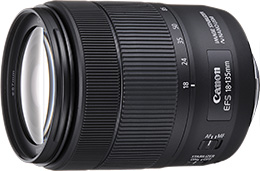Announced in February 2017, the new EOS 800D is a DSLR camera that caters to entry-level users. It comes equipped with the latest image processor, DIGIC 7, a maximum ISO speed of ISO 25600, 45 AF points in its viewfinder, a continuous shooting speed of up to 6 fps, and compatibility with Bluetooth. In this article, I share my thoughts on how the EOS 800D fares in an actual shoot. (Reported by: Yuki Marubashi)

EOS 800D/ EF50mm f/1.8 STM/ FL: 50mm (80mm equivalent)/ Aperture-priority AE (f/3.2, 1/320sec, EV±0)/ ISO 400/ WB: Daylight (B1)
I shot my child’s old drawing along with shortened crayons that show signs of frequent use. In order to portray a soft feel, I shot with a little bit of backlight, and searched for a suitable angle while checking the result on Live View, making sure that the drawing would not be masked by the reflection of light.
Top entry-level DSLR that encapsulates the latest technology
The EOS 800D is the latest model to follow in its vastly popular line of DSLR cameras catered to entry-level users. Equipped with the latest image processor, DIGIC 7, it features a maximum ISO speed of 25600 to give improved rendering, 45 AF points, a continuous shooting speed of up to 6 fps, and compatibility with Bluetooth low energy technology.
From the actual shoot, I felt that the usability of the camera has been improved. In particular, the convenience I experienced while shooting in Live View is worthy of special mention.
Although I highly commend the vari-angle monitor, which is also present on previous models, shooting with the monitor extended to the side may result in users wondering if they are shooting at an accurate horizontal level. No fears about that with the EOS 800D, which is newly equipped with an electronic level that determines the correct horizontal level, enabling you to shoot with ease. This can also be used when shooting objects on a table, where slight variations in the horizontal level can affect the image that you ultimately get.
Furthermore, the AF speed also provides an ease of use. With Dual Pixel CMOS AF, focus can be established very quickly with just a touch on the monitor.

EOS 800D/ EF50mm f/1.8 STM/ FL: 50mm (80mm equivalent)/ Aperture-priority AE (f/2.5, 1/2,500 sec, EV+0.7)/ ISO 400/ WB: Daylight
Placing only an arm through to the other side of the fence, I used Live View shooting to capture the drooping plum flowers. Since this method of holding the camera made it unstable, it was difficult to prevent camera shake. To counter that, on the screen, I touched the flower I wanted to focus on, which allowed AI Servo AF to track the focus, and enabled me to capture the shot.

EOS 800D/ EF-S18-135mm f/3.5-5.6 IS USM/ FL: 18mm (29mm equivalent)/ Aperture-priority AE (f/6.3, 1/500 sec, EV+0.3)/ ISO 1600/ WB: Daylight
I captured a dynamic shot of the child using a wide-angle of 18mm. Even if the child is moving, using [Face + Tracking AF] enables focus to be accurately positioned onto the face throughout all frames, without it shifting to the playground bars or onto his foot in the front of the picture.

EOS 800D/ EF-S18-135mm f/3.5-5.6 IS USM/ FL: 88mm (141mm equivalent)/ Aperture-priority AE (f/5.6, 1/800 sec, EV+0.3)/ ISO 400/ WB: Daylight
Shooting at a very low position close to the ground with Live View captures the face of the cat clearly and portrays a spacious background. When the cat approached me a few moments later, using AI Servo AF in high-speed continuous shooting allowed me to capture all of the frames in focus.

EOS 800D/ EF-S18-135mm f/3.5-5.6 IS USM/ FL: 135mm (216mm equivalent)/ Aperture-priority AE (f/5.6, 1/25 sec, EV±0)/ ISO 800/ WB: Tungsten light (A9, G8)
To bring out the dewy atmosphere of the forest after rain, I set the white balance with an emphasis on blue. Since the ‘Tungsten light’ setting would make the image appear too blue, I corrected the white balance by moving it towards the amber/green end. Even though I used a shutter speed of 1/25 sec, which was slower than what I would normally use when shooting handheld at the telephoto end, the image stabilization ensured that there was no visible camera shake in the image.
I noticed that I had been using Live View for the majority of the scenes in this test shoot, including those with moving subjects. Using [Face + Tracking AF] detects and tracks a face even if there are many other elements present in the surroundings. Since it is able to maintain its focus onto a face even if the person looks down or is partially obscured for a moment, I was able to shoot a scene of a child playing in a playground with ease. Combining this with the ‘high-speed continuous shooting’ drive mode setting enables greater shooting success. Perhaps this will encourage the use of Live View shooting for photographing everyday scenes involving children.
Upon testing the camera, I found many features which affirm its usability. For example, Creative Filter now features as an independent shooting mode. This means that even if your camera is set to shoot in RAW, you just need to turn the Mode Dial to apply a Creative filter effect to the image (note that the image will be saved in JPEG). I feel that the EOS 800D is a camera that will satisfy entry-level users who have a strong desire to improve their shooting skill.
For more about the EOS 800D, check out:
3 Reasons to Get the EOS 800D
Receive the latest updates on photography news, tips and tricks by signing up with us!
About the Author
A monthly magazine that believes that enjoyment of photography will increase the more one learns about camera functions. It delivers news on the latest cameras and features and regularly introduces various photography techniques.
Published by Impress Corporation
Born in 1976, Yuki Marubashi has been a member of a camera magazine publishing company since 2001. At the same time, he also engaged in stage design and was charge of its art and photography. Since then he has been working independently, and is involved in photography, writing and editing for camera magazines and books, photography for childcare magazines, and other miscellaneous photographic work.




































